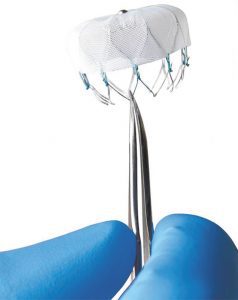By Heidi Smith, Contributor
 A trial fibrillation, or AFib, is an irregular heartbeat that can lead to blood clots, stroke, heart failure, and other heart-related complications. According to the American Heart Association, at least 2.7 million Americans are living with AFib. Sabry Omar, M.D., is an interventional and structural heart cardiologist who has practiced in the United States for 10 years and recently joined ShorePoint Medical Group in Venice. Dr. Omar is board-certified and specializes in using the latest, minimally invasive procedures and technologies to treat conditions like AFib. He is a member of the medical staff at ShorePoint Health Venice.
A trial fibrillation, or AFib, is an irregular heartbeat that can lead to blood clots, stroke, heart failure, and other heart-related complications. According to the American Heart Association, at least 2.7 million Americans are living with AFib. Sabry Omar, M.D., is an interventional and structural heart cardiologist who has practiced in the United States for 10 years and recently joined ShorePoint Medical Group in Venice. Dr. Omar is board-certified and specializes in using the latest, minimally invasive procedures and technologies to treat conditions like AFib. He is a member of the medical staff at ShorePoint Health Venice.
Q. What is AFib, and why is it dangerous?
A. AFib is an irregular heartbeat that affects the heart’s ability to pump blood normally. A number of conditions can contribute to AFib, including valve problems and high blood pressure. A common result of AFib is the formation of blood clots in an area of the heart called the left atrial appendage, or LAA. When a blood clot escapes from the LAA and breaks loose, it can go to the brain and cut off the blood supply, causing a stroke. In people with AFib not caused by a heart valve problem, more than 90 percent of stroke-causing clots that come from the heart are formed in the LAA.
Q. What are the symptoms of AFib?
A. Symptoms can include general fatigue, rapid and irregular heartbeat, dizziness, fatigue when exercising, chest pain or pressure, and more. Many patients will experience more than one of these symptoms, and some patients experience no symptoms at all. AFib is diagnosed through physical examination and diagnostic testing, including electrocardiogram and Holter monitor, which is a wearable electrocardiogram that tracks the heart rhythm during everyday activities.
Q. How do you treat AFib?
A. For many patients, AFib can be managed through the use of medications, including blood thinners. Some patients, however, cannot tolerate blood-thinners, which can cause bruising and bleeding. People at risk of falling may be especially concerned about using blood-thinners. Closing off the LAA is an effective way to reduce stroke risk without the need for blood thinners.
Q. How do you close off the LAA?
A. An implantable left atrial appendage closure device is designed for patients with AFib not caused by a heart valve problem. The device fits into the LAA to permanently close it off. This will keep blood from flowing into the appendage and prevent blood clots from developing in this area. Implanting the device in the LAA usually eliminates the need for lifetime treatment with blood thinners, and the frequent blood tests and food-and-drink restrictions associated with taking the medications.
Q. Can you describe the device and how you implant it?
A. The device is about the size of a quarter. It’s implanted into the heart during a one-time, minimally invasive procedure and is a permanent device that doesn’t have to be replaced and can’t be seen outside the body. To implant the device, we make a small incision in the patient’s groin area and insert a narrow tube, as is done in a standard cardiac catheterization or stent procedure. I then guide the device through the tube into the LAA. The procedure is done under general anesthesia and takes about an hour. Patients usually go home the same day but may stay in the hospital overnight if they feel weak.
Q. What happens after the procedure?
A. Forty-five days after the implant procedure, we reassess the patient to confirm the implant is properly placed and blood is no longer pooling in the LAA. If all is well, the patient no longer needs to take blood thinners. In a clinical trial, nine out of 10 people were able to stop taking warfarin, a commonly prescribed blood-thinner, 45 days after the procedure. That tracks with my experience, and I have performed hundreds of these procedures.
Q. What would you advise people who have symptoms of an irregular heartbeat?
A. See your primary care physician or cardiologist right away. An irregular heartbeat can be caused by many conditions and can increase your risk of heart attack and stroke, so delaying care can be life-threatening. We have advanced diagnostic technologies today and many treatment options, depending on the patient’s condition. We want to help patients live long and active lives.
Sabry Omar, M.D.
Interventional and Structural Heart Cardiologist
ShorePointMedicalGroup.com
(941) 497-5511







